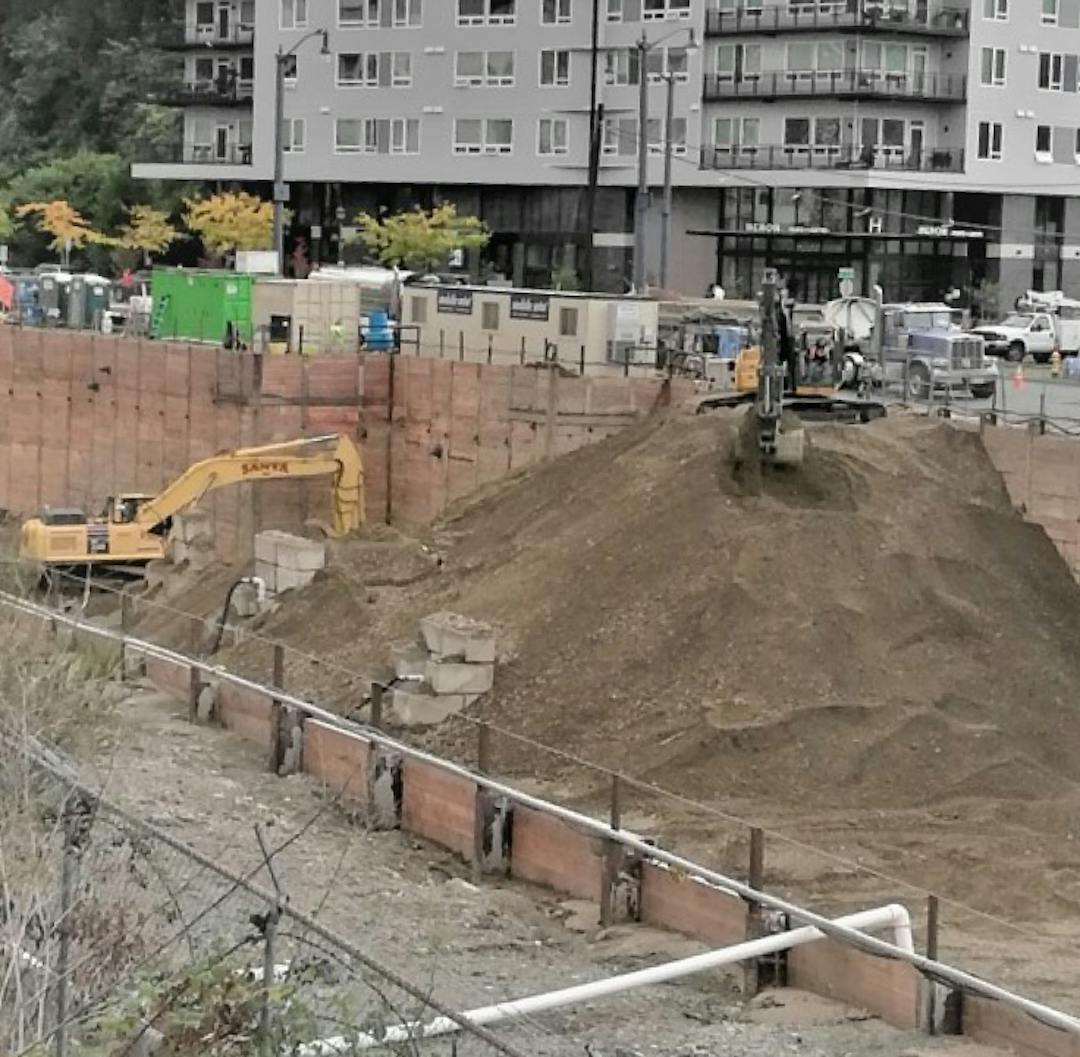Temporary Construction Dewatering
Consultation has concluded

The City of Redmond is working with the community to come up with a long-term policy for temporary construction dewatering (TCD). TCD is the artificial lowering of the groundwater to build underground structures in dry, workable conditions. This can impact the City’s ability to produce water from its wells, which provide 40% of Redmond’s drinking water. The City is currently conducting an analysis to determine the extent of tensions between new dense development patterns and water resource management policies. This work will focus on Downtown and Southeast Redmond as these are the areas of compact development that are over Redmond’s drinking water aquifer. For more details, please see the TCD Fact Sheet.
Redmond is Proposing Changes to Temporary Construction Dewatering Regulations
Redmond is moving forward with proposed changes to Redmond Municipal Code (RMC) 13.25 for Temporary Construction Dewatering (TCD). The changes would:
- Allow dewatering within the critical aquifer recharge area (CARA) for utilities, elevator pits, building footings, and crane footings only.
- Allow dewatering within the CARA for any structure if the dewatering rate is less than 500 gallons per minute.
Pending Redmond City Council review and approval, these changes would take effect June 28, 2025, concurrent with proposed changes to zoning regulations for Downtown and Marymoor Village.
Background on Temporary Construction Dewatering Code Changes
The Redmond Temporary Construction Dewatering Core Team, which includes members of the City’s Public Works, Planning, Fire, and Finance Departments, has been coordinating with the Redmond 2050 planning team to implement policy and code updates. These changes were informed by the TCD Business Case Analysis and Redmond City Council direction based on discussions that took place from January 2020 through September 2022. During those discussions stakeholders were engaged and deliberated the impacts of dewatering, parking ratios, and building heights with the following recommendations for code updates:
- Within the critical aquifer recharge area (CARA), dewatering is allowed for utilities, elevator pits, building footings, and crane footings only. In addition, dewatering is allowed for any structure if the dewatering rate is less than 500 gallons per minute.
- Reduction of parking ratios and increased building height within CARA to offset impacts of dewatering restrictions and align with urban planned development strategies.
Redmond City Council has given clear and consistent direction that the goal of the TCD policy work is to limit dewatering to elevator pits, footings, and utilities within the CARA (Council meeting dates: March 9, 2021, Dec. 7, 2021, Aug. 16, 2022, and Sept. 6, 2022).
Dewatering of any subsurface construction less than 500 gallons per minute will continue to be allowed within the CARA. The TCD Core Team have been following this direction and working with the Redmond 2050 planning team to modify code to increase building height and decrease parking ratios within the CARA to ensure growth targets can be achieved within TCD limitations.
Proposed Temporary Construction Dewatering Code Changes
During the first quarter of 2025, the City will propose the following changes to RMC 13.25 (underline is being added, strike through is being deleted):
13.25.045 Temporary construction dewatering limitations.
A. Temporary construction dewatering activities shall be limited to elevator pits, footings, and utilities within the Critical Aquifer Recharge Areas (defined in RZC 21.64.050.A).
AB. Temporary construction dewatering activities for elevator pits, footings, and utilities shall be limited to the following within the Critical Aquifer Recharge Areas (defined in RZC 21.64.050.A):
1. The rate at which groundwater may be captured, pumped, or removed from the development site shall be limited to 5,500 gallons per minute or less; and
2. The duration of temporary construction dewatering at a site shall be limited to a maximum of one year, measured cumulatively from the first date of dewatering activity; and
3. The depth of temporary construction dewatering allowed below the seasonal high groundwater elevation shall be limited to a maximum depth of nine feet.
B. If incentives are available within RZC that would allow development to be above ground and thereby avoid dewatering within the Critical Aquifer Recharge Area, then dewatering will be limited to elevator pits, crane footings, or utilities only.
Comments or Questions?
If you have any questions or comments on the upcoming TCD code changes, please email groundwater@redmond.gov.









